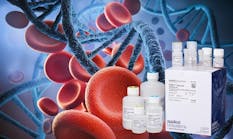When considering the future of point-of-care (POC) diagnostics, clinical laboratory professionals can take a cue from the World Health Organization (WHO). As far back as 2004, the WHO and the Special Programme for Research and Training in Tropical Diseases released a report that outlined the urgent need to develop new diagnostic tools for sexually transmitted infections (STIs) that can be used in the field in the developing world, where the disease burden is greatest. The WHO has frequently reiterated the need for point-of-care-testing (POCT) for STIs and other infectious diseases.
The original 2004 report “Mapping the landscape of diagnostics for sexually transmitted infections” introduced the acronym ASSURED to summarize the qualities desired in new point-of-care diagnostics: they should be Affordable, Sensitive, Specific, User-friendly, Rapid, Robust (for example, not requiring refrigeration), Equipment-free, and Delivered to those who need them.
That’s quite a list. So far there is only one POC diagnostic tool that checks all of the boxes: the glucose meter. Developers of diagnostic technologies face significant challenges as they work to create a device with very low limits of detection that can also quantitate nucleic acid targets, such as HIV virus or TB bacteria.
For this to be accomplished, vendors will need to overcome two major hurdles: basic science and the typical diagnostics business model.
The basic science problem is fundamental. Most diagnostic devices today use optical sensing, which measures aggregate light from populations of targets. Some newer diagnostics technologies use non-optical sensing, but they also rely on aggregate measurements of targets. The problem with aggregating measurements is that sensitivity rapidly degrades as size is reduced into smaller, cost-effective form factors. Plus, aggregation is a qualitative measurement. So, both low sensitivity and qualitative results fail the ASSURED criteria. What is needed is single-molecule sensitivity.
Even if sensitive high-end lab equipment could be converted into a small form factor, that raises the business problem: A single company cannot possibly create tests for the broad menu of assays needed to meet the world’s diagnostic needs. Rather, there must be an open platform where thousands of developers could create tests for multiple targets across a very broad spectrum of analytes. Unfortunately, the economics for manufacturing complex diagnostic systems do not provide enough profit margins to allow others to create assays.
Enter the nanopore
Nanopores have become increasingly familiar because of their emerging use in DNA sequencing, but these are biological pores and are only 2.5 nm, and are therefore unable to do anything other than sequence DNA. Also, as proteins, these pores are too expensive for mass manufacturing and cannot survive rugged environmental conditions. By contrast, solid-state (silicon) chips can be easily manufactured at scale, are robust enough for field use, and, with pore dimensions between 25 nm and 125 nm, they offer single-molecule sensitivity for any set of complex molecules, providing very precise, quantitative results.
Operationally, individual molecules pass through the nanopore one by one, while an electrical current measures the bulk and length properties of each. When reagents bind to designated targets (that is, DNA or analytes), the larger complexes create unique current signatures, allowing for precise quantitation. Since targets can be differentiated from background in a matrix in most sample types, very little prep is needed, reducing costs and simplifying workflow. Furthermore, only a few hundred molecules of both targets and background need to be detected to achieve 99.9 percent coefficient of variation (CV), so sensing time is usually just a few seconds.
This essentially becomes similar to a glucose meter in cost, ease of use, and accuracy. And as Internet of Things (IoT) devices, diagnostic data can be transmitted to smartphones, or other devices via the cloud. Last, workflow would be similar to that of a glucose monitor.
Multiplexing and menus
With core technological barriers surmounted, the focus for recognizing the promise of solid-state nanopore diagnostics technology turns to multiplexing and assay menus.
Multiplexing is remarkably straightforward: just isolate multiple nanopore chips onto a single disposable test strip. Since each chip has its own reagents, multiplexing is done by simply channeling sample fluids to each nanopore chip chamber. Each acts like a separate testing system. A test strip with 10 chips can easily fit within a form factor the size of a USB thumb drive. One can also multiplex assays within a single chamber as well, so the number of multiplexed tests could conceivably go between 50 and 100 tests in the same form factor.
As for the economics of building large assay menus, it is worth visiting why they don’t exist now. Current high-end diagnostics technologies require an expensive and complex ecosystem of hardware, sample prep, biochemistries, and real-world commercialization (manufacturing, distribution, marketing, and regulatory hurdles). The only economical way for diagnostics manufactures to yield positive returns is to develop and sell their own proprietary assays for their platforms. As noted earlier, one company can only produce so many tests.
While the economics of large diagnostic labs do not accommodate third-party developers, smaller and more affordable point-of-care devices can easily do so. Because one company holds all the patents that make this kind of sensing possible, it has opened up its platform to allow third parties to develop assays for it through partnership agreements. (The smartphone/app-store ecosystem has proved this to be a very successful business model.) Assay developers can make a test for a specific molecular target on the company’s system, and then set their own price and sell those tests in the marketplace. (Revenue is shared with the company.)
This also levels the playing field, allowing everyone to participate, from large existing diagnostic companies to smaller clinical labs that create laboratory-developed tests (LDTs). Large companies can adapt their existing library of reagents already in use in lab equipment. At the same time, smaller labs and life sciences companies can create assays for biomarkers that might not have a large enough market to be of interest to bigger players.
The applications for diagnostics are very broad. They could include portable STI diagnostics that answer the WHO’s challenge, as well as rapid, low-cost tests for other disease-causing agents. In cancer treatment, such devices could efficiently detect specific genetic mutations that are known to respond well to particular therapies (for example, KRAS, HER2, EGFR, etc.), or test for methylation of CpG islands within promoter or repressor regions.
Progress to date
As presented at the 2017 Next Generation Dx Summit, such technology is already showing promise. In studies at the University of California, San Francisco, an early prototype of the described device was used to detect cell-free, circulating tumor DNA from blood and urine samples in patients with colorectal or pancreatic cancer. The retrospective study confirmed that test results matched those obtained from both qPCR and ddPCR predicate platforms. (Original diagnosis was done using tissues that were established via DNA sequencing of biopsied tissue that harbored a known point mutation called KRAS G12D.)
This was the first time a hand-held testing system was used in a liquid biopsy test. The fact that the technology detected the mutation in urine samples suggests the viability of a small, low-cost system that could be used without requiring blood draws. Even more significantly, the process directly determined the mutant allele frequency, which is essential for clinical use in determining therapeutic treatment. Comparison studies to predicate platform qPCR assays were performed, and similar results were obtained.
If liquid biopsy tests such as the assay used in this study are developed and commercialized, we may one day have the ability to do serial monitoring at home, with self-administered tests across a large number of biomarkers from easily collected biofluids, such as urine, saliva, and nasal swabs. Whether daily, weekly, or monthly, clinicians could monitor the patient’s response to treatment. In the UCSF study, the researchers demonstrated how mutation status can change over relatively short periods of time, suggesting a benefit for testing frequently.
Rest ASSURED: point-of-care DNA and analyte diagnostics is possible. We’re already well on our way.
Dan Heller is CEO and co-founder of Santa Cruz, California-based Two Pore Guys, Inc., which holds the patents for the solid state nanopore sensing and measurement methods described in this article.





